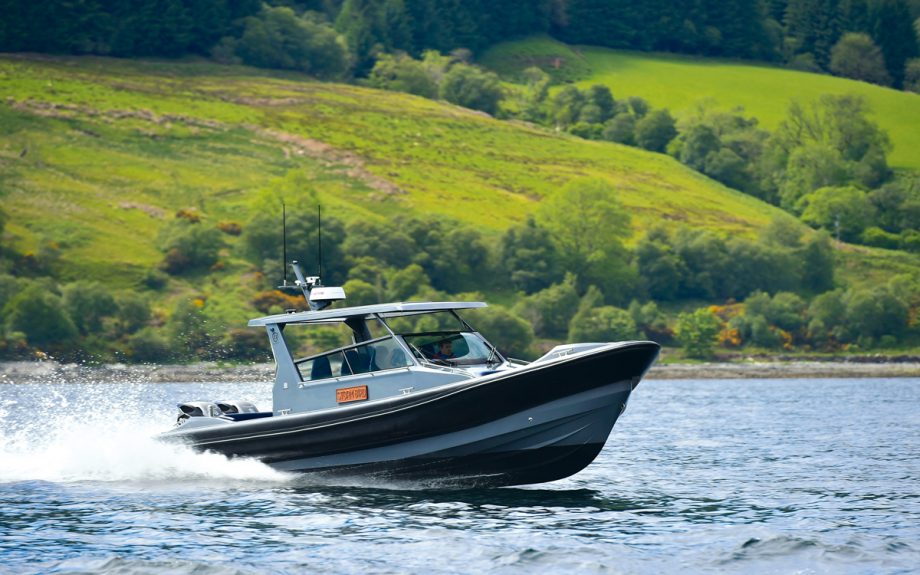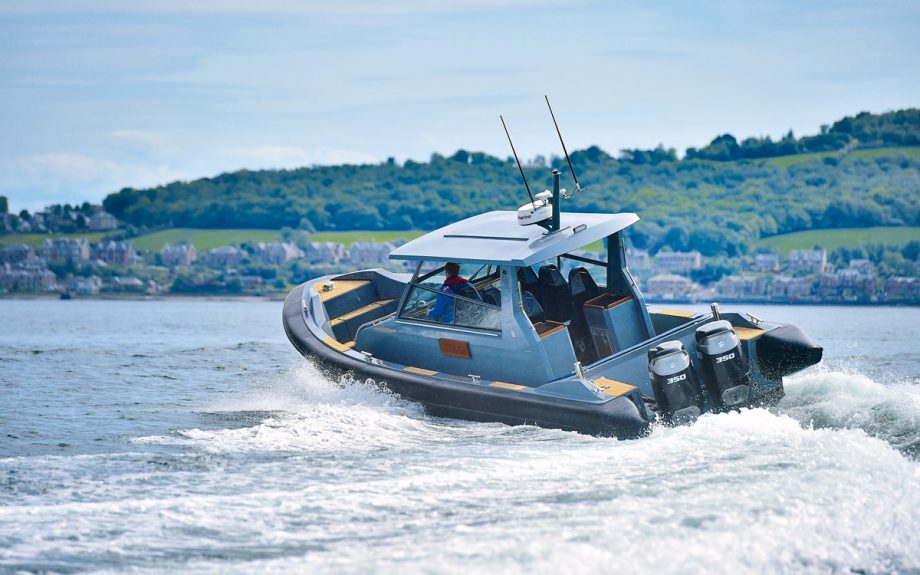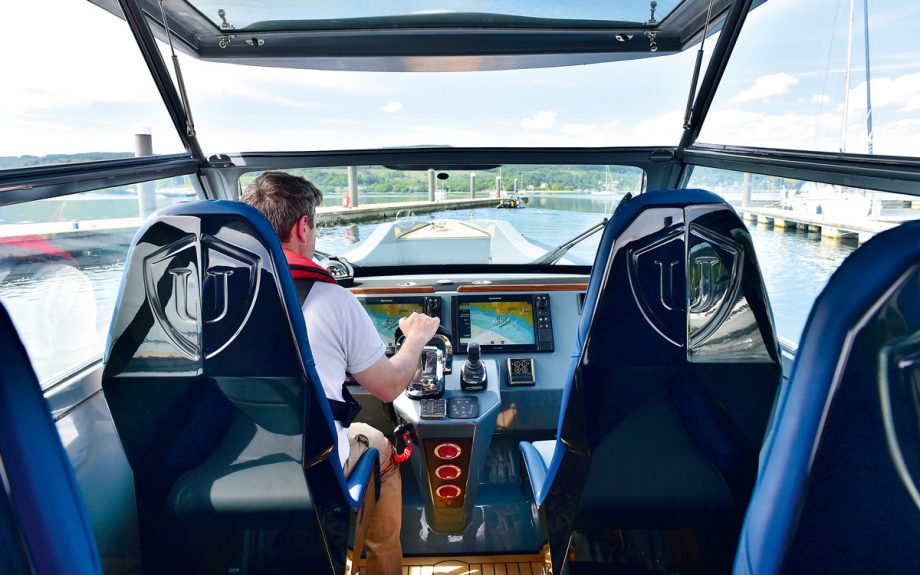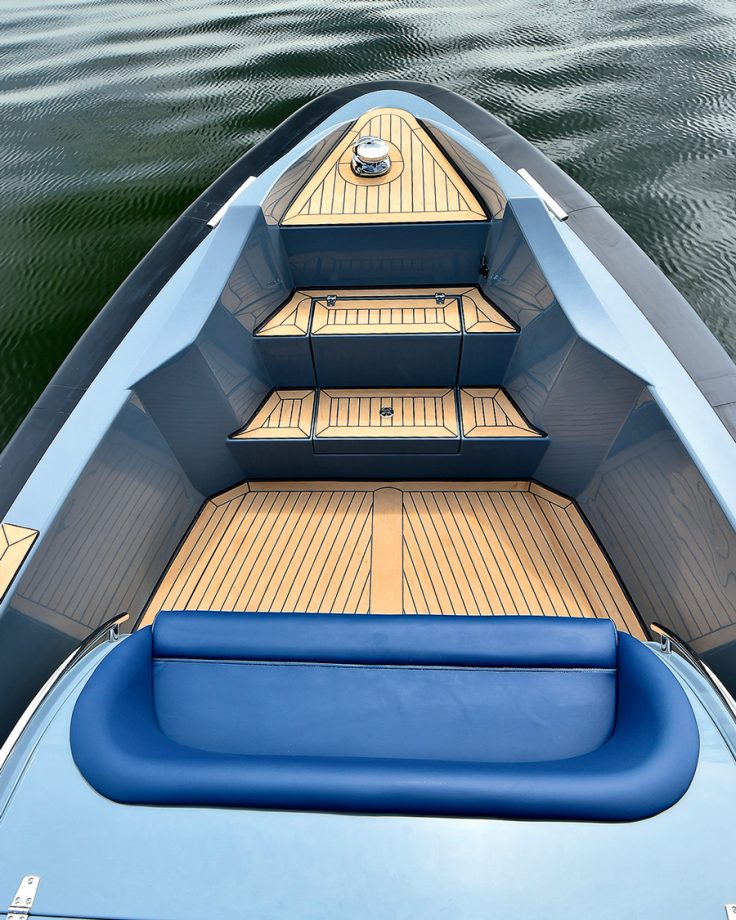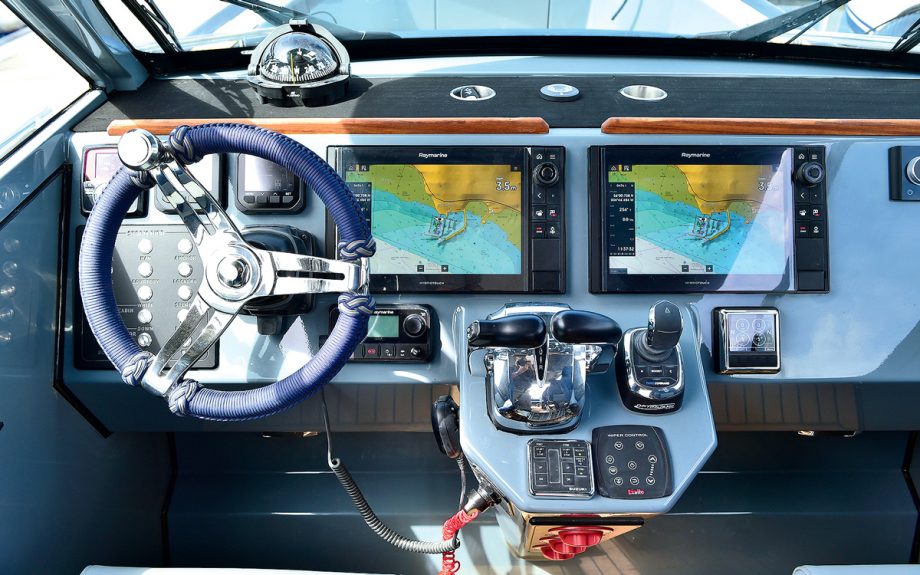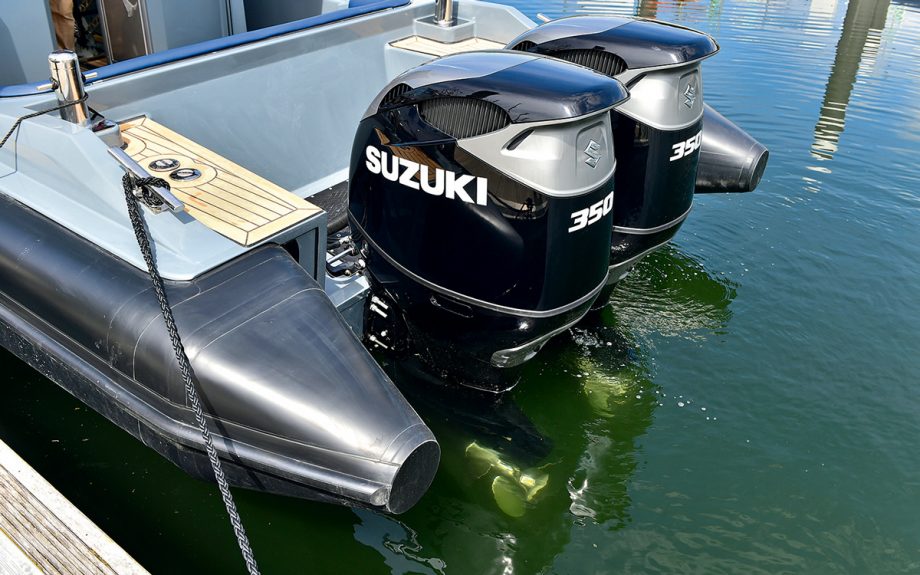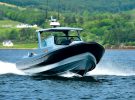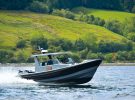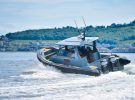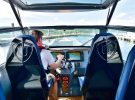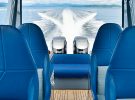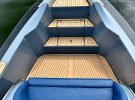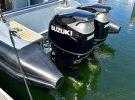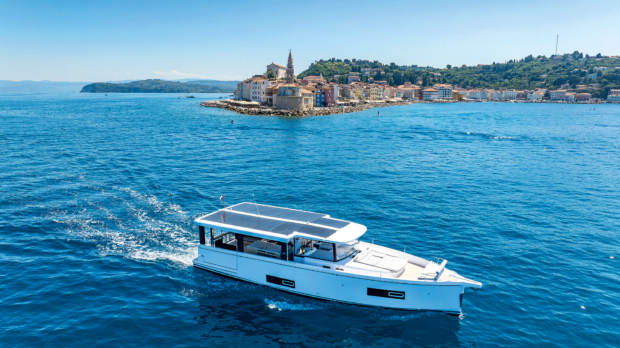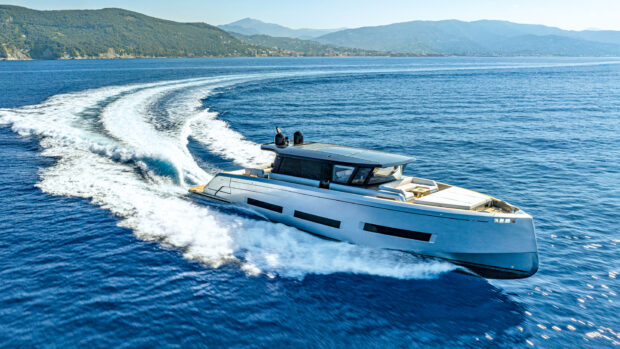The name may sound rather hubristic but thanks to a revolutionary new hull design it may not be far from the truth. Simon Everett drives the Ultimate Boats X-Class.
The 1950s and 1960s were a time of great innovation, driven by the race to the moon and the Cold War, which, believe it or not, is where the Ultimate Boat Company’s new range of rugged high-performance RIBs has its roots.
The Ultimate Boats may be a relatively young Scottish-based yard but its talented team of designers includes a highly experienced naval architect by the name of John Moxham.
Familiar to older MBY readers for hand-drawing the beautiful 3D colour layouts we used to publish back in the day, he is also an extremely talented boat designer. But he didn’t always design boats, he learned his trade in the aerospace industry, designing aircraft.
Article continues below…

Rafnar 850 RIB test drive review: This game-changing hull simply will not slam

Bear Grylls joins MBY on AMP 8.4 amphibious RIB test drive
Back in the 1960s Moxham worked on the XB70 Valkyrie, a high-altitude supersonic bomber capable of flying at Mach3.
It flew higher and faster than any fighter plane of its era. The key to its performance was specially shaped wing tips that trapped the air to give the increased lift and stability required to keep it flying in the thin atmosphere at 70,000ft.
The hull of the Ultimate Boats X-Class uses the very same principle. Instead of throwing the water out sideways, it rides on a cushion of entrapped water held there by Moxham’s specially shaped ‘retaining rails’.

John Moxham’s unusual hull design also enables it to run flatter thanks to the additional stern lift
It is counter-intuitive but the compressed water also acts like a shock absorber, helping to soften the ride. In Moxham’s own words: “When a boat is moving at speed, tonnes of water are moved to either side of the boat in the form of wash. Viewed from above, this wash forms a V shape.
“The new hull has vertical retainer rails which prevent the wash moving away from the hull. As the water is unable to move sideways or downwards a hydraulic force is formed which lifts the boat upwards, hence the principle of hydraulic lift.”
Another noticeable side effect is that the X-Class trims much flatter than most planing craft, 2-3 degrees instead of the usual 5 or 6 degrees, due to much of that enhanced lift being at the stern.

Counter-rotating propellers makes the most of the X-Class’s impressively grippy hull
The compressed water beneath the hull also has another benefit, giving more bite to the props even during extreme turns, resulting in virtually no detectable side slip or cavitation and minimal loss of speed.
For a boat aimed primarily at the commercial and military markets, its main focus is on comfort, stability and payload capacity rather than maximum speed. But it’s no slouch either. There is virtually no bow rise when accelerating, it simply slides up onto the plane without any discernible hump and can hold that planing aspect at just 11 knots.
The special chines, or Moxham retaining rails, are more than simple reversed chines. Starting fine at the unusually high stem to provide bow lift during a plunge, they increase in size towards the stern where vertical dams entrap and compress the water.
Coupled with a deep 25-degree deadrise angle at the transom, it helps explain its remarkable ride and handling.

Suspension seats absorb any bumps that the deep-vee hull can’t suppress
Eyes wide open
I tested a prototype 7.5m version of the X-Class in a 4-5ft swell with white tops and, despite testing hundreds of RIBs over 30 years in the industry, I can honestly say it left my eyes wide open in amazement. This much larger 11.0m version is even more capable.
The strength and rigidity that Ultimate Boats engineer into each craft doubtless helps that impression of indestructibility. There are no fewer than six hefty resin impregnated foam longitudinals with similarly constructed cross beams every metre helping to deliver a very robust hull and a pleasantly quiet ride.
The owner of this boat specified a Hypalon covering that looks like an inflatable tube but it’s actually a rigid polyurethane collar that can be colour matched to the hull. The rigid collar has several benefits; it uses less internal space than an inflatable one, it cannot deflate and it is harder wearing.

Tall prow and twin Suzuki 350hp outboards are well suited to its duties as an all-weather, high-speed shuttle
This boat was commissioned for transporting guests across from the mainland to the isle of Tiree off the West Coast of Scotland, hence the Scotseat suspension units for Ultimate Boats’ own bucket seats to ensure a comfortable ride even when things cut up rough, as they do quite regularly up there!
The wheelhouse has a hinged screen that can be opened in fine weather or dogged shut for cooler, inclement days. There is also a canopy system aft for weather-proofing the entire cockpit. In essence it is a high-speed water taxi with a few nods to hospitality for day trips, such as the fridge and space for a galley fitment.
The deckhead has red LED lighting to maintain night vision and there is a Scanstrut wireless docking station linked to a sophisticated audio system for entertainment on the go.
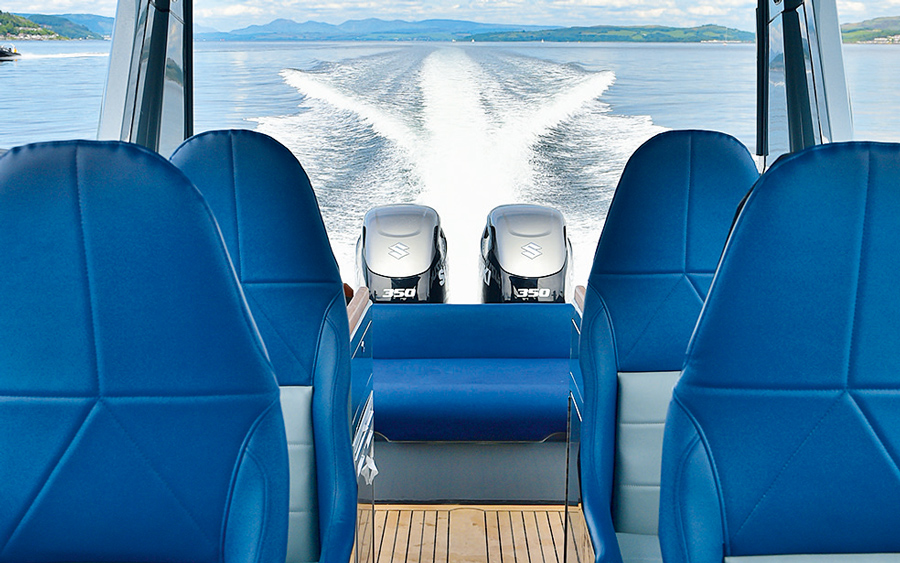
The high bow and freeboard provide seakeeping commensurate with the conditions. Enclosed side decks give a safe walkway forward o the deep bow cockpit with its 80cm of internal freeboard. Three steps up to the foredeck are set into the chain locker hatch where the anchor is held in a dedicated rack.
The twin 350hp Suzuki outboards are steered electronically and linked to an Optimus 360 joystick control system for close quarters manoeuvring and holding station using a GPS lock. Moving an 11m RIB sideways, without bow thrusters, is a very clever piece of vector thrust control but it does seem to work.
The props are still being tweaked for optimum performance but during our test they pulled to 5700rpm giving a top speed of 45.5 knots. There will doubtless be a few more knots to come when the engines are able to reach maximum revs.
The twin counter-rotating propellers of these engines may still not be quite as quick as a single screw engine but the extra control they provide is worth it.
Price as reviewed:
£280,000.00 inc. VAT
Verdict
Perhaps the final word should come from its owner, who penned these words of thanks to John Moxham: “I’ve just spent the weekend on The Clyde with my two sons getting to know and learning about the boat before I take her out to Tiree next weekend for our summer holidays. I was utterly blown away with her and wanted to drop you a personal note to let you know.” All I can add is that I wholeheartedly agree.
Details
LOA: 36ft 1in (11.0m)
Beam: 10ft 2in (3.1m)
Draft: 2ft 0in (0.6m)
Deadrise: 25 degrees
Displacement: 2,650kg
Fuel capacity: 1,000l
Test engines: Twin 350hp Suzuki DF350
Top speed on test: 45.5 knots
Cruising speed: 31.2 knots
Fuel consumption: 85.4lph
Range: 293nm
RCD category: B
Design: John Moxham and The Ultimate Boat Company



